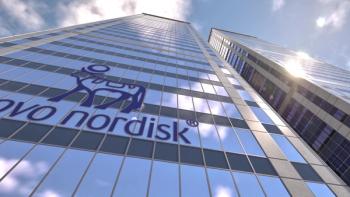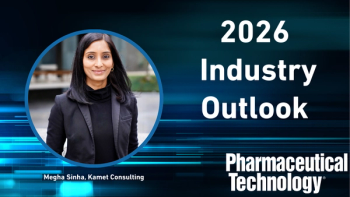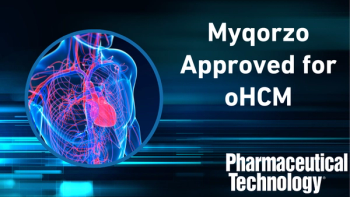
Continuous Processing: Addressing Misunderstandings and Roadblocks
A recent meeting emphasized the need for more guidance and flexibility from regulators, as well as harmonization, standards and equipment interoperability.
Led by advances in oral solid dosage (OSD) form manufacturing, continuous processing is at an interesting crossroads in pharmaceutical manufacturing today, says Doug Hausner, associate director of the Engineering Research Center for Structured Organic Particulate Systems (C-SOPS) based at Rutgers University in New Jersey.
“In less than two years’ time, we will have seen the complete wave of first adopters enter the market with their first continuous processes.” From a regulatory standpoint, pharmaceutical manufacturers have been “learning by doing,” he says, as early adopters of continuous processing pave the way for the result of the industry.
The technology hasn't been around long enough in pharma, and its adoption so far has been gradual, so global regulators are unlikely to issue specific guidance or directives for continuous processing in the short term, says Hausner. instead, they are quietly encouraging use of the approach and promoting discussions with manufacturers before pharmaceutical companies implement the technology or file formal new drug applications or post-approval changes involving continuous processing.
Lack of regulator guidance may have led to misunderstandings, since perceptions of regulators’ positions can make or break any innovative technology. As Hausner says, work on continuous processes has been going on in pharma for more than 10 years, but early efforts were often piecemeal. “The prevailing thinking in industry at that time was that FDA and regulators would never let us do this, so why waste our time,” he says.
C-SOPS, like other collaborative industry-academic groups, has established an open forum and community of practice where companies could share best practices and work on technical issues. “We were able to engage the FDA and other regulators to show the significant accomplishments that were being made in the field. As projects provided more evidence of continuous processing’s potential for reducing variability and cost and improving product quality, FDA became, not just accepting of the technology, but its advocate,” Hausner says, “which prompted companies to move forward [with continuous projects] much more so than they might have done otherwise.”
US regulators are fully supportive of continuous processing, but there may be lingering concerns about global regulators’ positions on the technology. “European regulators are very accepting of continuous technology, but perception can have a major effect on what companies decide to do and when.” C-SOPs has been getting the word out internationally and actively involving regulators to help clarify any misunderstandings and make it easier for companies to get acceptance for continuous from within their own organizations, Hausner says.
On May 9, 2017, the Summit on Oral Solid Dosage Continuous Manufacturing, held in Malta, experts from industry, the government, and academia examined some of technical and regulatory issues facing companies that are moving from batch to continuous processing. The event was sponsored by the International Institute for Advanced Pharmaceutical Manufacturing (I2APM), a global coalition of academic research centers, of which C-SOPS is a founding member. Hausner offered insights into what was discussed at the summit in a recent interview with Pharmaceutical Technology.
In attendance were representatives from pharmaceutical manufacturers such as Janssen Pharmaceuticals and Eli Lilly, which have adopted continuous processes, as well as academics and members of the regulatory community. Since continuous and semi-continuous process technology has made the greatest gains so far in oral solid dosage form (OSD) manufacturing, that was the focus of discussion. The goal with meetings like this is to establish a global community of practice to help pharmaceutical manufacturers move from batch to continuous, says Hausner, by convening and researching, but also training the next generation of contributors to the field.
One point that a number of speakers emphasized, Hausner says, is the richness of data that come from continuous processes. This knowledge increases the level of process understanding for future OSD manufacturing efforts, according to Rutgers professor Fernando Muzzio, director of C-SOPS, who highlighted the various ways in which continuous manufacturing improves process understanding (1). As he pointed out, “Continuous processes generate more information each minute than a batch process produces for the entire length of the batch.”
Lawrence De Belder of Janssen Pharmaceutical (2) reiterated the ways in which continuous process development can increase process understanding, but cautioned the audience on the need for change management. Trust must be built throughout any organization, he said, if the vision for enabling change is to be realized.
Need for harmonization and interoperabiity
He also pointed out what equipment and technology vendors might consider doing to ease the adoption of continuous processing. Creating and adopting standards and other support for equipment interchangeability would be an important first step, he said. However, De Belder noted, regulators should harmonize global requirements and be more flexible about small formulation changes, and also enable the parallel use of batch and continuous processes as a way to build a more flexible supply chain, says Hausner. Existing regulations can prevent companies from doing this, Hausner notes, a point that was addressed by subsequent speakers on the program.
The next few presentations focused on regulatory issues affecting continuous processing. Christine Moore, who had championed quality by design (QbD) for 11 years, when she worked at FDA’s Center for Drug Evaluation and Research (CDER) spoke about issues that may be impeding the adoption of continuous manufacturing. However, this time she spoke, not as a regulator but from the vantage point of industry, as executive director and global head for CMC policy at MSD in the US.
Christine Moore sees lack of alignment
Currently, she said, the biggest challenge that pharmaceutical companies face with continuous processing is alignment (3). Specifically, she said, there is a need for alignment on control strategies, as well the ability to use multiple formulations during the transitional stage, when both batch and continuous processing may need to be used for the same product. This lack of alignment has made it more difficult for advocates in drug development and manufacturing to make a strong internal business case for continuous, and may be slowing rates of adoption, she said.
Robert Bream of the European Medicines Agency (EMA) described an open, if not encouraging, approach to continuous processing that EMA is taking, despite lack of explicit guidance. However, Bream noted the fact that products with different compositions cannot be governed by the same marketing authorization application (MAA) and marketed simultaneously. Companies must be aware of this fact, since it can have an impact when manufacturers attempt to convert commercial products from batch to continuous operations. Janssen did this successfully with its drug, Prezista, in 2015, and more companies are now trying to gain experience in continuous by converting commercial operations from batch to continuous, Hausner says.
Strategic deployment at Eli Lilly
An academic panel discussion followed, Hausner says, in which the different centers within I2APM spoke about their recent efforts in continuous, after which Wyatt Roth of Eli Lilly presented the company’s strategy for continuous in OSD (4). Lilly is using continuous processing to accelerate new chemical entity (NCE) development and launch. The company has established a default continuous OSD manufacturing platform based on direct compression, implementing identical lines across R&D, clinical, and commercial manufacturing. So far, Wyatt said, the company has processed more than 10 molecules via continuous methods.
Returning to the regulatory sphere, Ewan Norton of the United Kingdom’s Medicines and Healthcare Products Regulatory Agency (MHRA) then shared his experience performing plant inspections at sites owned by early adopters of continuous processing (5). According to Hausner, he focused his talk on the post-approval aspect of continuous process implementation. For the most part, Norton said, inspectors treat inspections of continuous operations the same as they do batch operations, and the overall facility risk rating is unaffected. However, he noted, they may tend to focus on in-process testing, and issues related to analytical equipment malfunction/redundancy or calibration.
Sampling and feeding will be crucial
Sampling and control strategies for direct compression were then discussed by Robert Meyer, head of innovation and new technology development at MSD (6). So far, he said, work has demonstrated that a well developed process model, coupled with parametric feeder control, can result in less variability than an in-line analytical method. Meyer advocated using this approach, with analytical methods used separately for sampling.
The last few sessions on the program focused on international coordination, and public and private partnerships within I2APM and other organizations, says Hausner. Rutgers professor Alberto Cuitino discussed public-private partnerships (7), while Ding Ming, the United States Pharmacopeial Convention’s (USP’s) vice president of innovation, spoke about the organization’s efforts to support continuous manufacturing innovation. USP is actively communicating with C-SOPs and has recently convened an expert panel dedicated to continuous pharmaceutical manufacturing, Hausner says.
Summarizing the key points made at the Malta conference, Hausner says, the industry can expect to see an “open arms” approach to continuous manufacturing from regulators in the EU, but no specific guidance. “We will learn much over the next two years from first adopters paving the way,” he says.
In addition, the creation of standards and requirements will help advance adoption of continuous manufacturing, as will regulatory flexibility regarding minor formulation changes, and the use of parallel batch and continuous processing. “In the short term, flexibility on minor formulation changes when switching from batch to continuous will be decided on a case-by-case basis,” he says. Copies of individual speakers’ presentations referenced in this article may be found on
Future events like this are being planned for the future, with Japan being discussed as one potential location. Stay tuned for more information, and for special coverage of continuous processing in OSD in July’s issue of Pharmaeutical Technology.
References
1. F. Muzzio, “Advanced Pharmaceutical Manufacturing as an Enabler of QbD and Science-Based Regulation: Solid Dose Case Study, I2APM OSD Summit, May 9, 2017.
2. L. De Belder, “A Spotlight on a Major Corporate Implementation Strategy for Continuous Manufacturing,” I2APM OSD Summit, May 9, 2017.
3. C. Moore, “Potential Regulatory Challenges for Worldwide Approval of Continuous Manufacturing,” I2APM OSD Summit, May 9, 2017.
4. W. Roth, “An Industry Perspective for Transferring Continuous Manufacturing from Technical Evaluation to a Default Manufacturing Platform,” I2APM OSD Summit, May 9, 2017.
5. E. Norton, “MHA Experience in Early Adopter Continuous Manufacturing Inspections, I2APM OSD Summit, May 9, 2017.
6. R. Meyer, Sampling and Control Appropriate Strategies for Continuous Direct Compression, I2APM OSD Summit, May 9, 2017.
7. A. Cuitiño, “International Coordination 1: Public and Private Partnership Activities Supporting International Adoption,” I2APM OSD Summit, May 9, 2017.
Newsletter
Get the essential updates shaping the future of pharma manufacturing and compliance—subscribe today to Pharmaceutical Technology and never miss a breakthrough.




